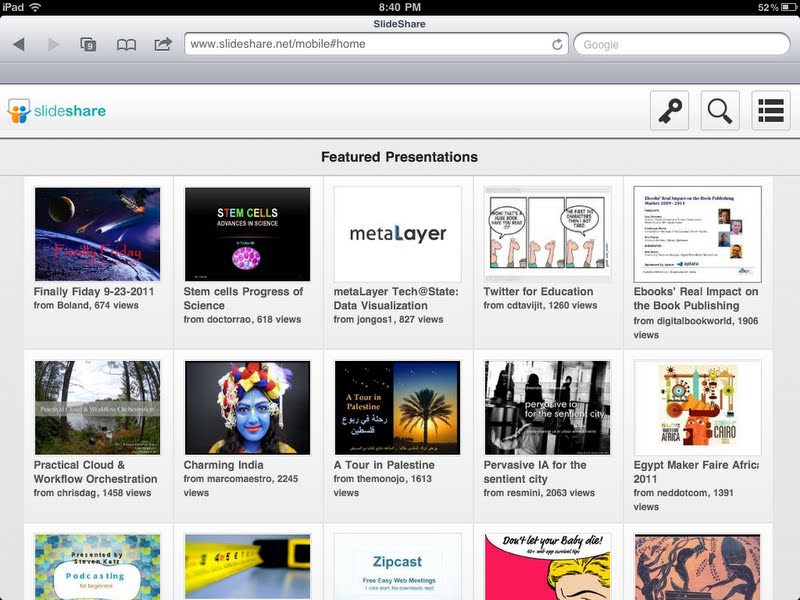SlideShare dumps Flash goes HTML5: Developer resources vs. multiple apps

SlideShare, a popular presentation sharing site, has dumped Adobe's Flash for HTML5 in a move that will use developer resources more effectively and form the basis for its mobile strategy.
Jonathan Boutelle, CTO of SlideShare, outlined the company's move in an interview. Boutelle's rationale for going HTML5 is notable because publishers may increasingly shun app stores over revenue splits and the fact that there's multiple platforms to consider.
SlideShare isn't first on the HTML5 bandwagon since LinkedIn, Pandora, Amazon and others have gone that route, but Boutelle indicated developer resources were top of mind.
"From the publisher side, if you play the app game it fragments engineering effort. You need an iPhone app, an Android app, maybe a BlackBerry app and when Windows Phone 7 gets traction you'll need that too," said Boutelle. "It splinters the developer resources in a negative way."
And once you're on the app-go-round it's hard to get off. "The continuing pain is pretty severe," said Boutelle.
In addition. Boutelle noted that there was a friction between sharing a presentation link and actually clicking on it under the app model. Users would have to download an app and install it. "That first engagement is a lot of work."
The decision to go HTML5 took "several weeks" and wasn't trivial. In the end, HTML5 support on every smartphone as well as the ability to share content without an install won the day.
Boutelle's working theory is that the Web will ultimately be the app store. SlideShare also had a business motive because it is ad and subscription supported. Boutelle also noted that SlideShare, which has 60 million users, wanted to control its own destiny and HTML5 allowed for it. "We don't want some bureaucrat in Cupertino between us and our user," he said.
From those business and technical arguments, SlideShare also saw other benefits by going to HTML5. Among the key points:
- The project took six people and six months of work.
- SlideShare implemented a proprietary technology that renders PowerPoint and Word documents in original fonts, styles in HTML5.
- The site renders 30 percent faster and files are 40 percent smaller and save on bandwidth costs.
- SlideShare's site is HTML5 by default and jumps back to Flash if a user doesn't have a current browser.
What remains to be seen is whether HTML5 sites and apps are developed in parallel or whether one wins out on the other. Boutelle said he thinks the HTML5 tipping point will arrive in two to three years.
Other analysts aren't so sure. Sterne Agee analyst Shaw Wu said in a recent research note that HTML5 won't have a big impact on Apple.
Wu said:
We believe HTML5 could impact third-party software such as Adobe Flash and Microsoft Silverlight that help accomplish this today on HTML4. However, for apps that run native on a mobile device, such as smart phones and tablets, we think the impact is not as negative as some have suggested. The reason is that in mobile, battery life, bandwidth, and touchscreen interfaces are of upmost importance so having apps that are compiled, optimized, and without browser overhead, are essential. We see HTML5 more as next-generation technology to build higher quality websites as opposed to apps.
